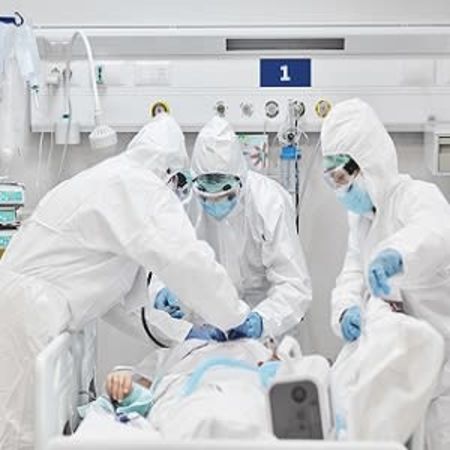Many COVID-19 patients develop severe bilateral viral pneumonia, which evolves into acute respiratory distress syndrome (ARD). High-flow nasal oxygen therapy (HFNO) has been shown to be effective in decreasing the need for endotracheal intubation with patients with acute hypoxaemic respiratory failure (ARF). However, in patients with COVID-19, the recommendation is of early intubation and invasive mechanical ventilation, but since COVID-19 numbers have been so high, this strategy has put a significant burden on ICU resources.
Mechanical ventilation has substantial risks, including ventilator-associated pneumonia, ICU-acquired weakness, delirium and cognitive impairment. HFNO could potentially help prevent intubation and spare critical ICU resources. That is why, during the pandemic, there have been recommendations advocating its use. However, two factors must be considered. HFNO may be insufficient to correct hypoxaemia secondary to intrapulmonary shunt and ventilation-perfusion (V/Q) mismatch, and it may also delay intubation and invasive mechanical ventilation. Vigorous breathing may increase the risk of further lung injury. That is why the use of awake prone positioning (awake-PP) during spontaneous breathing in non-intubated patients could help.
There is evidence to show that the combination of awake-PP and HFNO or non-invasive ventilation (NIV) could be feasible in patients with severe COVID-19 pneumonia. But so far, there is no data to show whether this combination could prevent the need for invasive mechanical ventilation.
A study was conducted to examine whether the combination of HFNO with awake-PP prevents the need for intubation as compared to HFNO alone. 199 patients with COVID-19 ARF were included in the study.
Findings from the study showed that the risk of intubation was not reduced with the use of awake-PP as adjunctive therapy to HFNO. Patients who were treated with HFNO + awake-PP showed a delay in intubation compared to patients treated with HFNO alone. However, awake-PP did not affect 28-day mortality.
These findings suggest that in COVID-19 patients with acute respiratory failure, the use of HFNO and awake-PP did not reduce the need for intubation, nor did it affect mortality.
Source: Critical Care
Image Credit: iStock



























